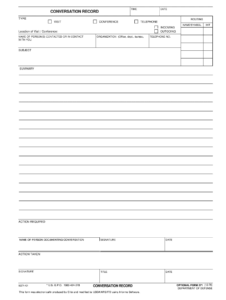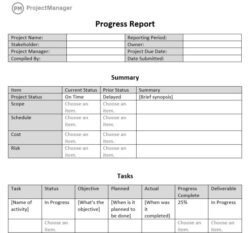Ever sat through a meeting and felt like nothing concrete was achieved? Or worse, important decisions were made but then completely forgotten a week later? You’re not alone. Many organizations struggle with keeping their employee meetings productive and, more importantly, documenting what actually happened. That’s where a solid employee meeting documentation template can be a game changer. It provides structure, ensures accountability, and acts as a valuable record for future reference. It’s the secret weapon for effective communication and progress tracking within your team.
Think of an employee meeting documentation template as the meeting’s memory. It captures the key discussions, decisions, action items, and assignments. Without it, you’re relying on individual recollections, which are often incomplete or biased. Imagine trying to build a house without blueprints – chaos, right? Similarly, running meetings without proper documentation can lead to miscommunication, duplicated efforts, and missed deadlines. The template serves as a centralized hub for all meeting related information, making it easily accessible to everyone involved.
Choosing the right employee meeting documentation template is crucial. You can find pre-made templates online, or you can customize your own to suit your specific needs. The key is to select a template that is easy to use, comprehensive, and aligns with your organization’s workflow. It should be something that your team will actually use and find helpful, not just another form to fill out. Let’s delve into the specifics of what makes a great documentation template and how to use it effectively.
Why is Employee Meeting Documentation Important?
Meeting documentation isn’t just about ticking boxes or creating unnecessary paperwork. It’s a vital component of effective communication, project management, and organizational transparency. Think of it as building a solid foundation for all future endeavors. When you properly document your meetings, you create a clear record of decisions, track progress on action items, and ensure everyone is on the same page. This, in turn, leads to improved productivity, reduced misunderstandings, and better overall team performance. Moreover, the habit of documentation fosters a culture of accountability within the team. It highlights who is responsible for what and by when.
Imagine a scenario where a critical decision was made during a meeting, but it wasn’t properly documented. Weeks later, team members have different recollections of what was agreed upon, leading to conflict and delays. With a well-structured meeting documentation template, this scenario can be easily avoided. The template provides a clear and concise record of the decision, eliminating any ambiguity and ensuring everyone is aligned. It acts as a single source of truth, preventing confusion and fostering a shared understanding of the goals and objectives.
Beyond immediate project needs, meeting documentation also serves as a valuable historical record. It allows you to track the evolution of projects, understand the rationale behind past decisions, and identify areas for improvement in future meetings. This is particularly useful for onboarding new team members, as they can quickly get up to speed on past discussions and decisions. It also helps in identifying recurring challenges and patterns in team dynamics, enabling you to address them proactively.
Furthermore, proper documentation can protect your organization from legal issues. In case of disputes or misunderstandings, meeting minutes can serve as evidence of what was discussed and agreed upon. This can be particularly important in situations involving contracts, negotiations, or compliance matters. It provides a clear and auditable trail of decisions, demonstrating due diligence and responsible management. It is always better to be prepared, and well-maintained meeting records can provide that security.
Finally, a structured employee meeting documentation template encourages more focused and productive meetings. Knowing that everything will be recorded encourages participants to be more mindful of their contributions and to stay on topic. It also forces the meeting organizer to prepare an agenda in advance, ensuring that the meeting has a clear purpose and objectives. In short, documenting meetings is not just about recording information; it’s about fostering a culture of accountability, transparency, and continuous improvement.
Key Elements of an Effective Employee Meeting Documentation Template
A good employee meeting documentation template isn’t just about filling in blanks; it’s about capturing the essence of the meeting in a clear, concise, and easily accessible format. There are several key elements that contribute to the effectiveness of a template. These elements ensure that all relevant information is captured and organized in a way that facilitates understanding and action.
First and foremost, the template should include basic information such as the meeting date, time, location (physical or virtual), and a list of attendees. This establishes the context of the meeting and identifies who participated. Following this, a clear statement of the meeting’s purpose or objectives is essential. What did you hope to achieve during the meeting? Having a clear purpose helps to keep the discussion focused and ensures that the meeting stays on track.
The heart of the template is the detailed record of the discussions, decisions, and action items. This should capture the key points made by each participant, the decisions that were reached, and the specific actions that need to be taken as a result of the meeting. It’s important to be as specific as possible when describing action items, including the assigned individual, the specific task, and the deadline for completion. This ensures accountability and makes it easier to track progress.
Visual aids such as tables, bullet points, and headings can greatly enhance the readability and clarity of the documentation. Break down large blocks of text into smaller, more digestible chunks. Use headings to organize the information into logical sections. Tables can be used to summarize key data or compare different options. Bullet points can be used to list action items or key points made during the discussion. All these help the readers to navigate through the document with ease.
Finally, make sure the template includes a section for any follow-up actions or next steps. What needs to happen after the meeting? Are there any outstanding issues that need to be addressed? Are there any future meetings that need to be scheduled? Including this information ensures that the momentum from the meeting is maintained and that the action items are followed through to completion. Remember that a well-designed employee meeting documentation template is a tool for communication, collaboration, and accountability. By including these key elements, you can create a template that helps your team to be more productive, efficient, and successful.
Using an employee meeting documentation template consistently ensures that your meetings are more productive, focused, and ultimately more valuable to your organization. It provides a clear roadmap for following up on discussed topics and ensures that everyone is aligned on the next steps. Incorporating such a template into your meeting routine is an investment in your team’s success and the overall efficiency of your operations.
The benefits of utilizing an employee meeting documentation template are undeniable, spanning from enhanced communication and accountability to the preservation of invaluable historical records. Embrace this tool to foster a culture of clarity, efficiency, and continuous improvement within your organization, ensuring that every meeting contributes meaningfully to your collective goals.



